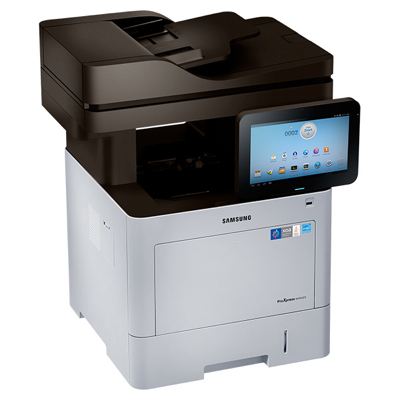
Like everything else, today’s office printing market is heavily influenced by ongoing changes in workforce behavior and advancements in mobile technologies. The continued focus on mobile printing technology is one example. Over the past few years, printing directly from mobile devices has improved significantly. Original solutions based on proprietary technology were clumsy and clunky, often requiring numerous steps just to print a simple email attachment. Today, there are untold numbers of secure mobile printing solutions offered in a variety of configurations: server-based, embedded, pull printing, public print and the list goes on.
As the workforce becomes more mobile, it is impacting the design of printing hardware in other ways. One of the more intriguing trends of late is the “consumerization” of the multifunction printer (MFP). The bring your own device (BYOD) phenomenon has changed the way knowledge workers conduct business. Historically, individuals would experience new technology in the office environment and then seek ways to affordably acquire that technology for their personal lives. Today, the reverse is true. Individuals are bringing their own personal devices into the workplace. As a result, knowledge workers expect their office technology experience to mirror what they have come to expect from their personal experience.
MORE: How Will Mobile Printing Impact the Future of Paper in the Office?
One look at the recent crop of printer and MFP devices makes it is easy to see how this trend is impacting office printing. OEMs are putting a great deal of focus on the functionality and design of the user interface, including features such as color touch screens, custom application support, cloud enablement and the ability to download applications to run on the device itself. In short, printers and MFPs are being designed to look and behave more like smart mobile device platforms.
This is not something that has occurred overnight. The typical workgroup MFP has become much more sophisticated, providing advanced capabilities that have naturally required more powerful controllers and improved usability. With features, such as embedded web browsers, integrated one-touch workflow solutions and the ability to support customized hosted applications, printers and MFPs have become information management devices that provide an on-ramp and off-ramp to the Internet. The typical MFP control panel and user interface has evolved in order to keep pace with the functionality of the device itself.
Android-powered MFPs
 |
Samsung M4583FX MFP |
One of the more interesting examples of the “consumerization” of the MFP can be found in recent product introductions from Samsung. Earlier this month, the firm launched its M4583FX and M4580FX ProXpress MFPs.
While these devices offer a number of intriguing features, it is the new Samsung Smart UI that sets them apart from the crowd. Utilizing a 10.1-inch LCD touchscreen display powered by the Android operating system, Samsung’s new MFPs have a control panel that not only looks and acts like an Android tablet, it essentially is an Android tablet attached to the MFP.
With the industry’s first MFPs powered by the Android operating system, Samsung provides a perfect example of taking a platform originally designed for a consumer experience and bringing that into an office workgroup product. Meanwhile, Samsung’s Smart UI provides more than just a flashy interface. Business users can customize the functionality of the MFP with features, such as web search, quick print and document preview functions. Both models also have an option to add wireless and active near field communication (NFC) capabilities, which allows users to print directly from NFC-enabled mobile devices using the Samsung Mobile Print App.
With the industry’s first MFPs powered by the Android operating system, Samsung provides a perfect example of taking a platform originally designed for a consumer experience and bringing that into an office workgroup product. Meanwhile, Samsung’s Smart UI provides more than just a flashy interface. Business users can customize the functionality of the MFP with features, such as web search, quick print and document preview functions. Both models also have an option to add wireless and active near field communication (NFC) capabilities, which allows users to print directly from NFC-enabled mobile devices using the Samsung Mobile Print App.
Samsung’s Android-powered machines likely represent the future of the office MFP. Today’s office users demand customization, and they want technology that can adapt to their specific needs. In fact, the future office MFP may not even require a built-in control panel. Instead, users will be able to walk up and authenticate themselves to the machine, at which point a fully customized user interface could be displayed directly on a personal smart device, based on access rights and features/functionality as defined by each individual user. It might not be that far away.
Robert Palmer is chief analyst and a managing partner for BPO Media, which publishes The Imaging Channel and Workflow magazines. He is an independent market analyst and industry consultant with more than 25 years experience in the printing industry covering technology and business sectors. Follow him on Twitter @palmerrg.















